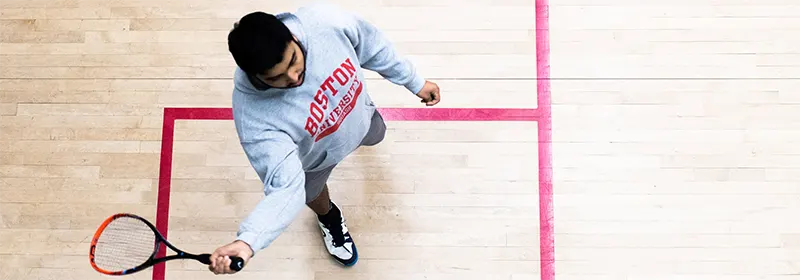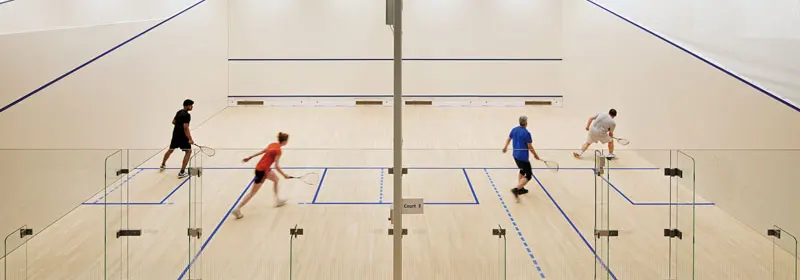20 July 2022 / 3-Min Read / Translate
The three ideas below are not in any particular order. What matters is you use them at the right time and in the right situation. Different opponents require different tactics, and it is important that you develop the ability to use the most appropriate tactics.
I’ve written about the squash serve plenty of times, and the reality is that the better you get at squash, the less important the squash serve is. However, for probably 75% of club players, it’s still a very important shot. Hitting an ace in squash is much harder than in tennis. Partly because you only get one serve and partly because of the situation itself. That doesn’t mean you shouldn’t try to win the point from the serve though.
I plan to make a proper video about the serve and write a more in-depth article, but for now, a good serve is one that causes your opponent to hit a weak return, BUT also doesn’t mean you could hit the ball out or very weakly. You will need to experiment with what serve works best against each opponent, but as a general rule the side wall causes the most problems for your opponent, so use it wisely.
Lastly, actually take time to practice your serve. Very few people do. Stick two targets to the wall, one each side and using a red dot ball, try to hit it. Keep score. 11 Serves. Which “side” wins? Whichever “side” lost, do 5 more serves that side. You could even make it competitive with a partner at the end of a friendly match as a cool down drill.

Is he about to make the best of his serve?
Tennis courts have different surfaces which necessitate different tactical approaches, and while squash courts do vary due to geography and ceiling height, in general they are very similar to each other. Tennis players generally fall into two tactical styles: Baseliner and Server and Volleyer. Clearly, that is a gross over-simplification, because even baseliners can and do occasionally serve and volley, but I think it’s fair to say that 80% of their play time is in their style.
Those two style descriptions could be used for squash, but I feel more comfortable thinking about “attacking” and “defending” styles. Pick one you are better at and for most of the time play like that. I’m not saying that defender-style players can’t play attacking shots, I’m saying that if your strengths are tight drives and counter-drops, don’t play against your natural strengths.
I started playing tennis before I played squash and loved to serve and volley, so for me, I was an attacking player. I used to love to hit lots of volleys, even if it makes me work harder. I wanted to rush my opponent, I wanted to hit the winner shot, not making them make a mistake. All I ask is for you to try to assess your strengths and weaknesses and play to those. Lastly, I still want you to improve your weaknesses though – don’t just neglect them.

They look like they are having fun.
Goodness me, watching a squash match without a lob is like watching a football match where nobody kicks the ball over 3 metres in the air. It’s crazy that you have 6 metres to hit the ball and then whatever the height is to the ceiling, but still not use it! Here’s a quick anecdote that I have probably told too often already: I used to coach at the BBC in White City, London and the court was in some production building. The distance to the ceiling from the out line of the front wall was nearly 6 metres (so double the front wall). Oh man! It was such fun lobbing on that court, I wish all courts were like that. It’s also one of the reasons why I want outdoor squash to become more popular!
Too often squash players see the lob as an admittance of weakness. I’ve actually heard people say “I never hit lobs because I don’t want my opponent to think I am under pressure!“. WHAT! They follow that with “Anyway, the best form of defence is attack!” The oft repeated phrase to justify playing a drop that almost certainly hits the tin because they WERE under pressure.
Playing lobs opens up the court to make your drops more effective, gives you time to get back into position and if played well *IS* a great attacking shot. There are plenty of drills you can do to practice the lob. P1 (player 1) boasts, P2 hits crosscourt lob, P1 hits a straight deep drive, P2 hits a boast. As you can see, you will need to “swap” sides after a few minutes. There’s also a variation which you can see myself and Tim Garner do in his interview video↗.
To summarise: Use the serve well, play to your strengths and play more lobs!